Liquid level transmitters with a 4 to 20 milliamp current loop output signal for determining liquid depth or the fluid level by measuring the hydrostatic pressure.
This range features hydrostatic level transmitters specifically designed to provide a continuous analogue 4-20mA current loop output signal, directly proportional to liquid depth. Utilising the well-established principle of hydrostatic pressure measurement, these sensors offer a robust and widely compatible solution for monitoring and controlling liquid levels in diverse industrial and environmental applications, from deep boreholes and bulk storage tanks to process vessels and open channel flow measurement. The industry-standard 4-20mA output ensures seamless integration with existing control infrastructure, offering exceptional noise immunity over long transmission distances and inherent diagnostic capabilities valuable for engineers and technicians.
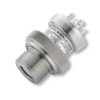 Dirty water, sludge & sewerage tank level 400 mbar pressure sensor - Flush ceramic diaphragm pressure sensor for measuring level of a dirty water, sludge & sewerage tank.
Dirty water, sludge & sewerage tank level 400 mbar pressure sensor - Flush ceramic diaphragm pressure sensor for measuring level of a dirty water, sludge & sewerage tank.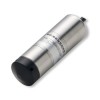 3m range 4-20mA output submersible hot water tank level sensor - This submersible level sensor is suitable for use in hot water tanks. It features a 4-20mA output, 0-3m measurement range, and high-temperature resistance up to 125°C (257°F).
3m range 4-20mA output submersible hot water tank level sensor - This submersible level sensor is suitable for use in hot water tanks. It features a 4-20mA output, 0-3m measurement range, and high-temperature resistance up to 125°C (257°F).
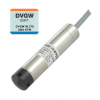 LMP307 Submersible Level Transmitter
LMP307 Submersible Level Transmitter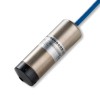 LMK458 Marine Approved Hydrostatic Level Transmitter
LMK458 Marine Approved Hydrostatic Level Transmitter 18.605 G Low Cost Submersible Diesel Fuel and Water Tank Level Sensor
18.605 G Low Cost Submersible Diesel Fuel and Water Tank Level Sensor LMK331 Screw-In Ceramic Level Transmitter
LMK331 Screw-In Ceramic Level Transmitter
- Underground rain water storage tank level sensor and readout for 2 metre depth - Water level indicator for a 2 metre deep rain water storage tank located underground.
- 200m deep well pump water level sensor, switch & display - Protect your deep well pump with thhis submersible level transmitter and wall mounted indicator and alarm. This system provides reliable water level monitoring and pump protection at depths of up to 200 meters.
- Borewell water level sensor for 100m water height - Low cost solution to measuring the water level in a borewell with a water height of as much as 100 metres above the submerged sensor
- Lightning protected level sensing for data centre cooling tower basins - Precise water level monitoring in data centre cooling towers, where high accuracy and robust protection against lightning strikes are critical for operational uptime.
- Robust hydrostatic level sensing in aerial firefighting water tanks - Facing reliability issues with fragile vented sensor cables? See how a ceramic diaphragm level transmitter with a heavy-duty cable provided a durable solution for measuring water and retardant levels.
- Measuring fuel and water tank levels on ferries with a hydrostatic transmitter - Marine certified level sensors for ferry onboard fuel, water, and sewage tanks up to 2.4 meters
 DPT200 Pressurised Tank Level Differential Pressure Transmitter
DPT200 Pressurised Tank Level Differential Pressure Transmitter LMK382 Low Range IP68 Waste Water Level Transmitter
LMK382 Low Range IP68 Waste Water Level Transmitter LMK387 Cleanable Sewage and Sludge Pressure/Level Sensor
LMK387 Cleanable Sewage and Sludge Pressure/Level Sensor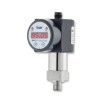 DS200 Combined Hydrostatic Level Switch, Gauge and Sensor
DS200 Combined Hydrostatic Level Switch, Gauge and Sensor
- Abstraction pump protection using a screw-on hydrostatic level transmitter in a tidal river - Learn about the deployment of a 4-20mA screw-on hydrostatic level sensor for monitoring fluctuating seawater levels. Key aspects include the benefits of a fixed threaded mounting, diaphragm vulnerability without a nose cone, and protecting the atmospheric vent tube.
- Desalination plant feed tank submersible level sensor - Highly durable submersible level sensor designed for harsh desalination plant environments. Copper-nickel alloy housing and ceramic diaphragm ensure long-term reliability in aggressive saline conditions. 4-20mA output, 0-5mH2O range.
- 6m range 4-20mA submersible animal feed tank level and PT100 sensor - A hi-temp media 125°C/257°F max, RTD temperature measurement submersible liquid level sensor for submerging in an animal feed tank and measuring the depth over a range of 0 to 6m from the flush diaphragm, and sending the corresponding 4-20mA signal through the submersible cable electrical connection.
- Floating dry dock ballast tank 14ft range 4-20mA output submersible seawater level sensor - 14ft range submersible level sensor for monitoring the level of seawater in floating dry dock ballast tanks.
- Storm water detention tank submersible level transmitter for measuring up to 20ft depth - Monitor water levels in storm water detention tanks with the LMK382 submersible level transmitter. This IP68 rated sensor features a 20 ftWG range, 4-20mA output, and a detachable nose cone for easy maintenance.
- Dairy wash water tank submersible level sensor for temperature up to 100C and 2m high tank - Monitor wash water levels in high-temperature dairy applications with the LMK382 submersible level sensor, featuring 125°C temperature rating and durable construction.
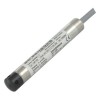 LMP305 Borehole Level Transmitter
LMP305 Borehole Level Transmitter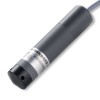 LMK807 Plastic Submersible Level Transmitter
LMK807 Plastic Submersible Level Transmitter LMP 308 Removable Waterproof Cable Connection Water Level Sensor
LMP 308 Removable Waterproof Cable Connection Water Level Sensor LMK 487 Submersible Ballast Tank and Draught Level Pressure Transmitter
LMK 487 Submersible Ballast Tank and Draught Level Pressure Transmitter
- Storm surge protected low range submersible river level transmitter
- Cooling tower basin water level transmitter
- High temperature mini sewage tank level sensor
- Fleet management system submersible 3000mm height petrol tank level ATEX rated pressure sensor
- Dual level and temperature monitoring in hotel water treatment tanks
- Certified submersible sensor for dual level and temperature monitoring in potable water tanks
- Retrofitting ship bubbler tank gauging system with 22mm submersible level probe
- Dock bridge tidal flap submersible level transmitter with sea water compatibility
- Yacht diesel fuel and water level sensor for non-uniform shaped marine tanks
- Yacht fuel tank hydrostatic transmitter to replace float level sensors on shallow tanks
- HVO and FAME biofuel storage tank submersible level sensor
- Surface water hydrostatic level sensor for shallow stream
Find out more about 4-20mA Output Hydrostatic Level Transmitters & Sensors to determine which product options and capabilities will best meet your application requirements.
Hydrostatic level transmitters operating with a 4-20mA current loop output provide a reliable method for continuous liquid level measurement by sensing the pressure exerted by the column of liquid above the sensor diaphragm. This pressure (P) is directly proportional to the height (h) of the liquid column and its specific gravity (SG), following the principle P=ρgh, where ρ is density and g is gravitational acceleration. The 4-20mA signal facilitates straightforward integration into standard industrial control systems like PLCs, DCS, or SCADA, making it a preferred choice for process engineers and system integrators.
The 4-20mA analogue current signal is favoured in industrial settings for level measurement due to its inherent robustness against electrical noise often present in plant environments, especially over long cable distances common in tank farms, deep wells, or extensive processing facilities. This two-wire configuration often allows the sensor to be ‘loop-powered’, deriving its operational power directly from the current loop itself, simplifying wiring requirements and reducing installation costs. Furthermore, the ‘live zero’ of 4mA provides a crucial diagnostic function, allowing control systems to readily differentiate between a true zero level reading and a potential fault condition, such as a broken wire or sensor malfunction, which would typically result in a 0mA signal.
For accurate level measurement in tanks, sumps, reservoirs, or vessels open to the atmosphere, transmitters typically utilise a vented gauge pressure reference. A vent tube, often ingeniously integrated within the sensor’s electrical cable jacket, allows ambient atmospheric pressure to act on the negative side of the sensing diaphragm. This effectively cancels out barometric pressure fluctuations, ensuring that the measured pressure, and thus the calculated level, solely reflects the hydrostatic head of the liquid. In contrast, for sealed or pressurised vessels, an absolute pressure sensor configuration or potentially a differential pressure transmitter setup might be necessary to accurately determine the liquid level independent of vessel pressure variations.
Material compatibility is a critical design consideration determined by the application’s process fluid. Wetted parts, encompassing the sensor housing and the crucial sensing diaphragm, must be meticulously selected based on the chemical properties, operating temperature range, and potential presence of abrasive solids within the measured liquid. Common material options range from versatile 316L stainless steel, suitable for water, fuels, and mild chemicals, to more specialised alloys like Hastelloy C276 for highly corrosive media, or polymers such as PVDF or FEP for aggressive chemical or demanding wastewater applications. In some cases, diaphragm seals or isolation systems might be employed to protect the sensor from particularly challenging or viscous media.
Installation specifics vary significantly depending on the application environment and vessel type. Submersible hydrostatic level sensors are purpose-built for direct immersion into the liquid, often suspended securely by their reinforced, load-bearing cable. These installations necessitate high ingress protection ratings (typically IP68) to guarantee long-term operational integrity while fully submerged. Careful selection of the cable’s outer jacket material (e.g., PUR for mechanical durability, FEP for chemical resistance) is vital to resist degradation from the process liquid over time. Alternatively, for external mounting, transmitters might feature threaded process connections for installation into the bottom or side walls of a tank, sometimes requiring specific flange types or hygienic fittings for food-grade or pharmaceutical applications.
Common applications fully leverage the inherent simplicity, reliability, and integration ease of 4-20mA hydrostatic sensors. In municipal water systems, they are indispensable for monitoring levels in reservoirs, water towers, and deep boreholes, frequently integrated with VFDs for efficient pump control to maintain supply. Chemical processing plants extensively use them for precise inventory management in bulk storage tanks and critical level control within reactor vessels or mixing tanks. Similarly, fuel depots rely on their accuracy for monitoring inventories of diesel, gasoline, and various oils. Other widespread uses include controlling levels in wastewater lift stations, monitoring agricultural irrigation systems, measuring levels in ship ballast tanks, and managing coolant levels in industrial machinery.
Accurate level readings depend critically on correct calibration and scaling of the 4-20mA output signal. The 4mA signal point is typically configured to correspond to the lowest desired measurement level (e.g., empty tank or minimum operating level), while the 20mA signal point represents the highest level (e.g., full tank or maximum operating level). Crucially, adjustments for the specific gravity (density relative to water) of the process fluid are essential if it differs significantly from water (SG=1.0). This ensures the output signal accurately reflects the true liquid level rather than just the raw pressure reading. Some advanced transmitter models offer convenient field adjustability of zero and span settings, or even incorporate HART communication protocol superimposed on the 4-20mA loop, enabling powerful remote configuration, detailed diagnostics, and parameter adjustments by instrument technicians.
